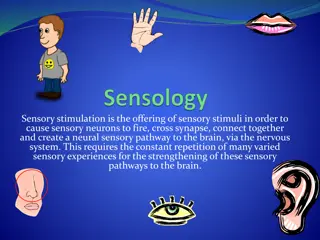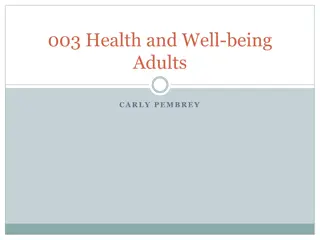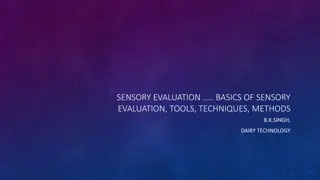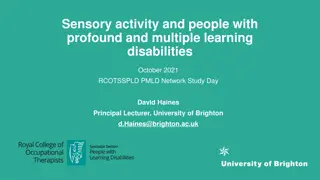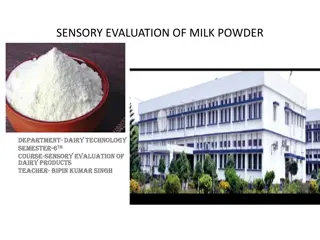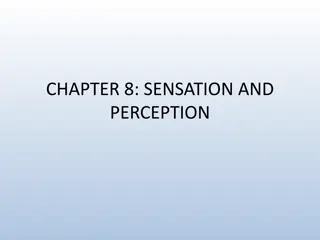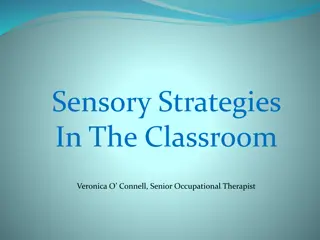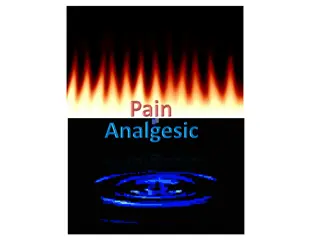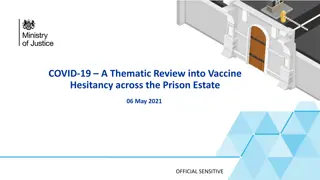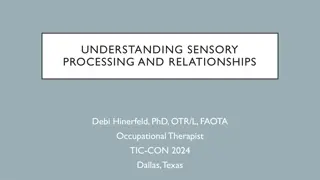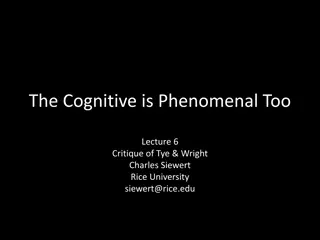Age-Related Sensory and Functional Decline
Age-related sensory decline is a normal part of aging, impacting hearing, vision, touch, taste, and smell which can affect daily activities. Functional decline, including arthritis and mobility issues, is also common among older adults. Explore how sensory and functional changes can impact daily life and ways to address these challenges.
Download Presentation

Please find below an Image/Link to download the presentation.
The content on the website is provided AS IS for your information and personal use only. It may not be sold, licensed, or shared on other websites without obtaining consent from the author.If you encounter any issues during the download, it is possible that the publisher has removed the file from their server.
You are allowed to download the files provided on this website for personal or commercial use, subject to the condition that they are used lawfully. All files are the property of their respective owners.
The content on the website is provided AS IS for your information and personal use only. It may not be sold, licensed, or shared on other websites without obtaining consent from the author.
E N D
Presentation Transcript
The Senses Age-related sensory decline is normal! Sensory change accelerates at different ages, but generally begins in your 50s: Hearing mid-40s Vision mid-50s Touch mid-50s Taste mid-60s Smell 70s
Sensory Decline 50% of all older adults experience hearing loss that affects their communication and relationships with others Adults 45+ are more likely to report vision loss than younger adults Leading eye diseases that affect older adults: Cataracts Glaucoma Macular degeneration Diabetic retinopathy
Sensory Decline As we age, our sense of touch decreases which can make detection of temperature, vibration, pressure, and pain more difficult Humans can recognize over 10,000 scents, and a decline in this ability can be a safety issue for older adults For some older adults, the ability to taste sweet & salty items are the first ones to be affected by sensory loss
Functional Decline 54 million adults in the U.S. have arthritis. This number is expected to grow to 78 million by 2040. Mobility is the most common disability among older Americans 40% of older adults have experienced shortness of breath
LETS GET GRAY! Insert one cotton ball into each ear Tie a strip of plastic wrap around your head, or affix to eye/sunglasses OR put on simulation glasses Put a cotton ball up one nostril Tape several fingers at the knuckle Put on a pair of gloves On the palm side of your hand, insert a popsicle stick into your gloves with each index finger Put a few popcorn kernels in your shoe Put a straw in your mouth and breathe through it
Great news! Your grandson is here to visit. But, uh oh! He can t tie his shoe.
Lets Discuss Do all older adults experience these types of decline?
Lets Discuss How would your daily life be different if you had to live with the sensory and functional decline that you experienced today?
Lets Discuss How can you better interact with a person who might be facing age-related sensory and functional decline?
Lets Discuss What can you do now to potentially reduce the magnitude of age-related sensory and functional decline? Most damage to the senses is caused by environmental factors!
Thank you! We greatly appreciate your willingness to complete an evaluation of this program.




